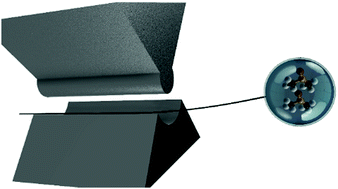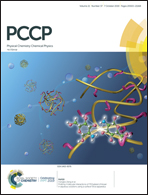Direct detection of polar structure formation in helium nanodroplets by beam deflection measurements†
Abstract
Long-range intermolecular forces are able to steer polar molecules submerged in superfluid helium nanodroplets into highly polar metastable configurations. We demonstrate that the presence of such special structures can be identified, in a direct and determinative way, by electrostatic deflection of the doped nanodroplet beam. The measurement also establishes the structures’ electric dipole moments. In consequence, the introduced approach is complementary to spectroscopic studies of low-temperature molecular assembly reactions. It is enabled by the fact that within the cold superfluid matrix the molecular dipoles become nearly completely oriented by the applied electric field. As a result, the massive (tens of thousands of helium atoms) nanodroplets undergo significant deflections. The method is illustrated here by an application to dimers and trimers of dimethyl sulfoxide (DMSO) molecules. We interpret the experimental results with ab initio theory, mapping the potential energy surface of DMSO complexes and simulating their low temperature aggregation dynamics.



 Please wait while we load your content...
Please wait while we load your content...
